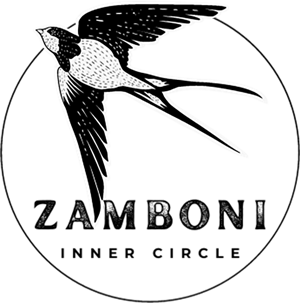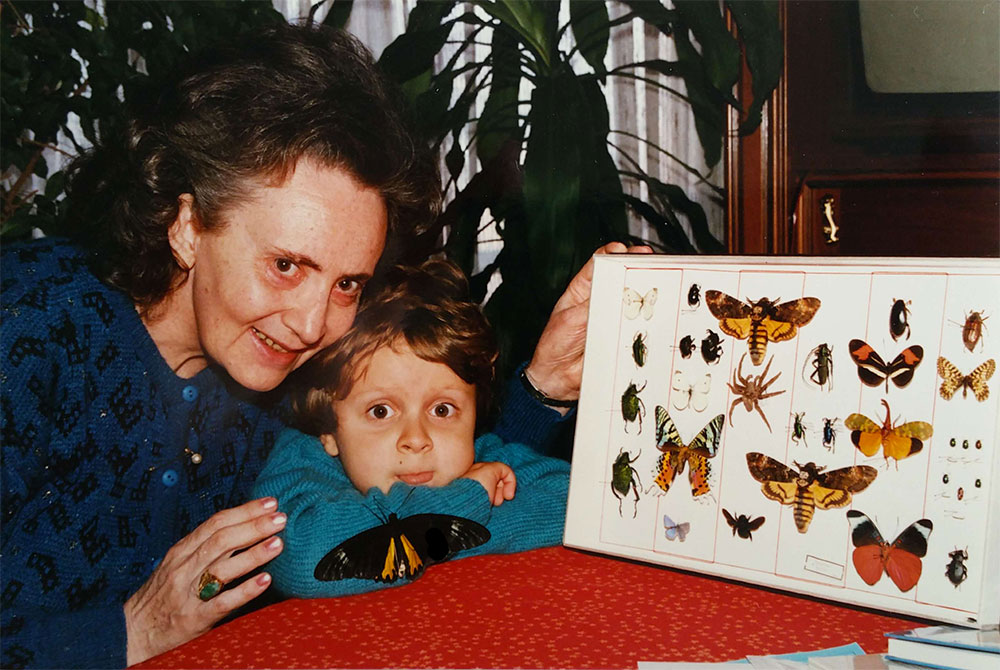In today’s digital landscape, marketers are wrestling with unprecedented challenges that make it increasingly difficult to capture and sustain consumer attention. With an endless stream of information and distractions, the average human attention span is getting shorter.
The similarity of advertising messages exacerbates this waning focus even more. With the excess of social media, consumers are not only distracted but also increasingly immune to the “same old” marketing tactics that once worked.
Ad fatigue is real, and the sheer volume of content has rendered many traditional strategies ineffective. Amid this social noise and constant distractions, standing out and making a meaningful connection with the audience is more difficult than ever.
In this turbulent sea of information, pattern interrupts emerge as a lighthouse, offering a new way to break through the noise and capture attention. A pattern interrupt is a technique used to disrupt the audience’s flow of thought, making them pause, even if momentarily, to consider what they are seeing or hearing.
By employing an unexpected element—be it an unusual graphic, a pause in speech, or a shocking headline—marketers can seize the critical seconds needed to engage the consumer.
Essentially, pattern interrupts hit the reset button on a person’s attention, making them more receptive to the message that follows. The use of pattern interrupts provides a tangible competitive advantage in the cutthroat world of online marketing.
While many businesses still rely on cookie-cutter strategies—be it in email marketing, social media, or content creation—those who successfully implement pattern interrupts set themselves apart.
These disruptors can not only grab attention but also sustain it long enough to convey their message effectively. This isn’t just about being different; it’s about being memorable and impactful in a world where consumers are trained to scroll past anything that looks familiar.
Therefore, mastering the art of pattern interrupts is not merely an option; it’s a requisite for those wishing to stay ahead in the game. Below, you’re going to learn more about how this strategy works and see niche examples of how marketers can use it in different areas of their business for better discoverability and higher conversions.
Understanding How Pattern Interrupts Work
The concept of pattern interrupts has a rich history deeply rooted in the study of human psychology. Initially, this technique was employed in therapeutic or counseling environments as part of neurolinguistic programming (NLP) and cognitive behavioral therapy (CBT).
In these settings, therapists used pattern interrupts to disrupt negative or harmful thought patterns that clients were experiencing. For instance, if a person was spiraling into a loop of anxiety or depressive thoughts, a therapist might use a quick, unexpected question or physical gesture to “interrupt” this mental flow.
The sudden break in the cycle provides an opening, a cognitive gap that allows the individual to divert from their automatic responses and consider new perspectives or solutions.
The scientific foundations of this technique are grounded in how our brains process patterns and habits. Our brains are fundamentally habit-forming organs. They create neural pathways for frequent activities and thoughts, making them automatic over time.
While this efficiency has evolutionary benefits, such as freeing cognitive resources for other tasks, it can also trap us in rigid and sometimes detrimental loops of behavior and thinking.
In a therapeutic context, pattern interrupts serve to “re-wire” these automatic neural pathways, making room for healthier patterns to take root. Understanding this psychological background is key to appreciating why pattern interrupts are so potent in the realm of marketing.
The core principle is the same: breaking through automated, monotonous patterns to deliver a message that is new, refreshing, and impossible to ignore. This psychological tool has been adapted to serve the commercial goal of capturing consumer attention amid the endless stream of information they encounter daily.
Far from being a trendy buzzword or a baseless trick, the use of pattern interrupts in marketing taps into fundamental mechanisms of human cognition. By harnessing the same techniques that therapists use to effect transformative mental change, marketers can create campaigns that not only capture attention but also have the potential to influence consumer behavior in meaningful ways.
The psychological mechanisms underlying pattern interrupts draw from how our brains are programmed to interact with our environment. In essence, our brains have evolved to scan for anything unusual or out-of-place.
This ability has roots in ancient survival instincts. For early humans, detecting an anomaly—like an odd sound in the bushes or a slight movement in the distance—could signal danger and necessitate quick action.
This trait has been preserved in modern humans, even though the “dangers” we face today are usually far less immediate. When a pattern interrupt occurs, it effectively jolts our cognitive process, prompting the brain’s attention and focus mechanisms to activate.
Neurologically, this involves areas of the brain such as the reticular activating system (RAS), which plays a crucial role in attention and alertness. When something unexpected enters our field of perception, the RAS kicks into gear, signaling to other parts of the brain that something noteworthy has happened.
This cue compels the brain to shift its focus to the new stimulus. Another component at play is the release of neurotransmitters like dopamine, which are associated with reward and attention mechanisms.
When the usual pattern of things is disrupted, our brain not only notices but also finds the interruption somewhat rewarding. This explains why pattern interrupts can make content more memorable and engaging; they tap into our neurological reward system.
In the context of the digital age, this attention-grabbing ability becomes invaluable. The online world is saturated with a near-constant flow of information, making it easy for our brains to autopilot through content.
A pattern interrupt acts like a mental “speed bump,” disrupting this auto-scrolling behavior. It compels us to slow down, diverting our focus from the mindless navigation of content to concentrate on a specific piece of information.
The pattern interrupt essentially capitalizes on our evolutionary predisposition to notice the unusual, leveraging it to make a message stand out in a crowded digital landscape.
Therefore, understanding the science behind pattern interrupts isn’t just an academic exercise.
It offers practical insights into consumer behavior and provides a powerful tool for marketers who wish to break through the constant stream of online distractions. By incorporating pattern interrupts, marketers can effectively ‘hack’ into these hardwired psychological mechanisms, making their messages not just seen, but truly observed and considered.
The importance of pattern interrupts in online marketing cannot be overstated, especially in an age where digital content is produced at an overwhelming rate. According to some estimates, every day sees the upload of millions of new social media posts, blog articles, and videos.
This deluge of content has conditioned users to skim, scroll, and swipe at breakneck speeds. With so much vying for their attention, people have become experts at filtering out information, often in a subconscious manner.
In such an environment, traditional marketing strategies can easily go unnoticed, lost in the noise of an overcrowded digital marketplace. This is where pattern interrupts come into play as a critical tool for marketers.
The technique challenges the autopilot mode that most consumers operate in when navigating the digital landscape. A well-placed pattern interrupt—like an eye-catching visual, an unexpected headline, or a surprising opening line in an email—compels the audience to break from their routine, if only briefly.
That small moment of pause is a window of opportunity for a marketer to insert their message and create a meaningful impression. In a way, it’s akin to a virtual “elevator pitch,” where you have a limited timeframe to make your case and engage your audience.
Pattern interrupts can serve multiple purposes, depending on how they’re used. They can act as icebreakers that warm up cold leads or as pivotal moments in storytelling that increase engagement and retention.
They can create suspense, evoke emotions, or simply serve as mental markers that make your message easier to remember. Because pattern interrupts tap into basic psychological processes, their application can be extremely versatile, adapting to different marketing goals and platforms.
It’s also worth noting that pattern interrupts can enhance the effectiveness of other marketing strategies. For example, they can make your call-to-action statements more impactful, your storytelling more engaging, and your branding more memorable.
When used in conjunction with data analytics, A/B testing, and other sophisticated marketing tools, pattern interrupts can be finely tuned to resonate with specific target audiences.
Pattern interrupts aren’t just a neat trick but a strategic necessity for modern online marketing. They provide a means to stand out in an overcrowded field, to capture and hold attention, and to make your marketing messages resonate on a deeper level.
By understanding and implementing this technique, marketers gain a tactical edge that could mean the difference between a scrolled-past post and a game-changing engagement.
4 Styles of Pattern Interrupts That Can Be Used By Marketers
Pattern interrupts can come in different formats and styles. You want to have a variety of methods at your disposal so that your pattern interrupts don’t become a pattern of their own!
There are four basic styles for you to use, beginning with visual interrupts. Visual elements are among the most immediate and impactful ways to grab a person’s attention.
With online marketing, visual cues often dictate whether a user will engage with your content or move on. The use of contrasting or unexpected color schemes can jolt a viewer’s attention and break the monotony of their online experience.
In the weight loss niche, for instance, while soft blues and greens are usually associated with health and wellness, using a bold, contrasting color like bright orange for a call-to-action button could create an impactful pattern interrupt.
It’s unexpected, and therefore it captures attention. In the field of online marketing, think about a monochrome website that suddenly introduces a single, vivid color in a pop-up or sidebar ad.
The eye is naturally drawn to it, breaking the visual pattern and increasing the likelihood that the viewer will engage with that particular element. Imagery, too, plays a crucial role in capturing attention.
In the weight loss industry, a common image might be of a slim, fit person. Imagine interrupting this pattern by placing an image of a scale with the needle moving backward, symbolizing weight loss in an unconventional way.
The break from the expected pattern makes the viewer pause and consider the message being conveyed. Similarly, in online marketing, while we’re accustomed to seeing stock photos of people in suits or in front of computers, a pattern could be interrupted by using an image of a marketer at the top of a mountain, holding a laptop.
The message here could be that online marketing provides the freedom to work from anywhere, and this visual break from the norm effectively conveys that sentiment. Visuals are an incredibly potent tool in the marketer’s arsenal for breaking viewer habits and encouraging engagement.
Utilizing surprising color schemes and innovative imagery can set the stage for a deeper connection with your potential customer. Textual elements are another potent means of creating pattern interrupts.
In a landscape where consumers are used to certain conventions in typography and language, introducing an unexpected element can be particularly eye-catching. Changing font styles and sizes can be a subtle but effective way to disrupt the reading flow and grab attention.
For example, in the weight-loss niche, most content might use a standard, easy-to-read font to present facts or tips. Introducing a different font style for testimonials or important statistics can make that information pop and force the reader to pay closer attention.
In online marketing, where fine print and bullet points are abundant, using an unusually large font for a singular statement of value—like “Increase Your Conversion Rate by 200%”—can act as a textual speed bump.
It causes readers to stop and consider the importance of that statement amid a sea of otherwise uniformly presented information. The words you choose and how you arrange them can also serve as effective pattern interruptions.
For instance, in the weight-loss industry, viewers might be accustomed to phrases like “Lose Weight Fast” or “Get Fit Now.” If you suddenly introduce a tagline like “Escape the Endless Diet Cycle,” you’ve created a pattern interrupt.
This line deviates from the standard phrasing people expect to see, invoking curiosity and encouraging them to explore your content further. Similarly, in the world of online marketing, phrases like “Boost Your Sales” or “Maximize ROI” are everywhere.
A pattern interrupt here could be a phrase like “Stop Leaking Profits.” It’s unexpected and therefore catches the eye, compelling readers to investigate how exactly they might be ‘leaking’ profits and how your service or product can help.
Textual pattern interrupts can be just as compelling as visual ones when used effectively. By playing with font styles and sizes or employing unconventional wording and phrasing, you can make your audience pause and engage, giving you that crucial moment to deliver your message effectively.
While the digital world primarily focuses on visual and textual elements, auditory cues shouldn’t be underestimated in their power to disrupt patterns and capture attention. Sound can evoke emotions, set the mood, and serve as an effective pattern interrupt in various online marketing scenarios.
Music has a profound impact on how we perceive content, influencing emotions and even behavioral intentions. In the weight loss niche, for example, a video advertisement may typically use uplifting, motivational music to inspire viewers to take action.
A pattern interrupt here could involve switching the musical tempo or genre at a pivotal moment in the video—say, when revealing a remarkable before-and-after transformation.
This sudden change grabs attention and emphasizes the point being made. In online marketing, especially in video content or webinars, music often serves as background filler.
An unexpected musical shift, perhaps from casual to intense, can signal to the viewer that something important is about to be shared, therefore regaining their attention if it has waned.
Sound effects can act as micro pattern interrupts within larger pieces of content. For instance, in a weight loss podcast that usually follows a monologue or interview format, the sudden insertion of an applause or bell sound effect when a significant tip or milestone is discussed can jolt the listener’s attention.
In the realm of online marketing, you could use a cash register “cha-ching” sound when discussing revenue increase or a buzzer sound when debunking common myths. These sound cues break the expected auditory pattern, causing the listener to refocus on the content.
Voiceovers offer another layer of complexity for pattern interrupts. You could surprise your audience by switching from a male to a female voiceover artist to emphasize a point or introduce a new section in a podcast or video.
For instance, adding a male voice to share a testimonial in a weight loss tutorial where the narration is primarily female can draw in new listeners. Similarly, in online marketing webinars or video series that generally rely on a single narrator or host, introducing a guest speaker without prior announcement can serve as an auditory pattern interrupt.
The new voice, with a different tone and speaking style, brings in a fresh perspective and revitalizes the audience’s attention. Auditory pattern interrupts offer an underutilized but highly effective avenue for capturing and maintaining attention.
By employing strategic changes in music, sound effects, and voice elements, marketers can break the monotony and make their content not only engaging but also memorable.
Engaging the sense of touch or movement—whether it’s through interactive elements in digital spaces or through physical products—can also serve as a potent pattern interrupt.
This tactile dimension provides a direct, visceral form of engagement that can be incredibly effective. Interactive features, such as clickable quizzes or swipeable stories, involve the user in a tactile way that goes beyond mere observation.
In the weight loss niche, instead of just presenting before-and-after photos, an interactive slider that allows the viewer to manually swipe between ‘before’ and ‘after’ can make a stronger impact.
This direct involvement makes the viewer more invested in the content, thereby heightening engagement. In online marketing, interactive calculators or ROI assessment tools can serve a similar purpose.
Rather than simply presenting statistics or benefits, inviting the user to input their own figures and see personalized results is far more compelling. It breaks the pattern of passive content consumption and replaces it with active engagement, making the message more memorable.
Though the focus here is largely on online marketing, we should not ignore the impact of physical products as kinesthetic pattern interrupts. In the weight loss industry, this could manifest as a uniquely textured grip on a piece of exercise equipment that provides tactile feedback, setting it apart from more traditional smooth-grip alternatives.
The unusual texture interrupts the user’s expectations, making the product more memorable and potentially more satisfying to use. In online marketing, this can be achieved through unique packaging for a physical product or even tactile features on a business card.
If you’re in the business of selling online marketing courses, for example, including a high-quality, textured notebook as part of the course package would be unexpected. It serves as a tactile reminder of the brand and breaks the pattern of purely digital interactions.
Kinesthetic pattern interrupts add an extra layer of engagement that most digital marketers often overlook. Incorporating interactive elements or unique physical products can significantly boost engagement levels and make your brand or message stick in people’s minds for a longer period of time.













